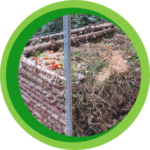Contents of this page
Soil
What is soil and how is it formed?
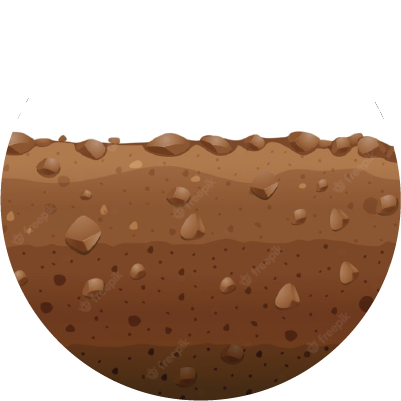
The term soil refers to the animate outer layer of our earth’s crust. It is an important part of our environment and the basis for life on Earth. The soil as a weathering layer of the earth’s outer crust is often only a few centimetres thick and yet a highly complex, living system. The soil forms the basis of life for most plants, animals and for humans. It consists of mineral components (clay, silt, and sand), plant roots, dead organic material, soil organisms, soil air and soil water.
BENEFITS FOR GREEN COOL SCHOOLS

- Create your own soil and use it for greening activities and your plants at school.
- The finished compost can be used to improve greenery and beds in the school garden.
- From waste to soil: contribution to a more sustainable nutrient cycle and an environmentally friendly school.
How do soils develop?
Soils develop very slowly. The starting material for soil formation was the rock on the earth’s surface, which only developed over time, through weathering and humus formation, into the soil as it exists today. The process of forming a soil, as we find it today, takes about 10,000 years. During this time, it can grow several metres or just a few centimetres. This depends on the type of rock, the relief, the climate, and the human being. Weathering creates crevices. Soil particles brought in by wind and water accumulate in these spaces. Pioneer plants also settle. Minerals, which serve as nutrients for the plants, are released. Plant remains accumulate on the weathered rock. Through the work of plant roots, soil animals and microorganisms, the rock decays, a humus layer forms, and more and more plants settle. Over time, the soil horizons are formed. Depending on the source rock and influences, different soil types are formed, such as brown soil.
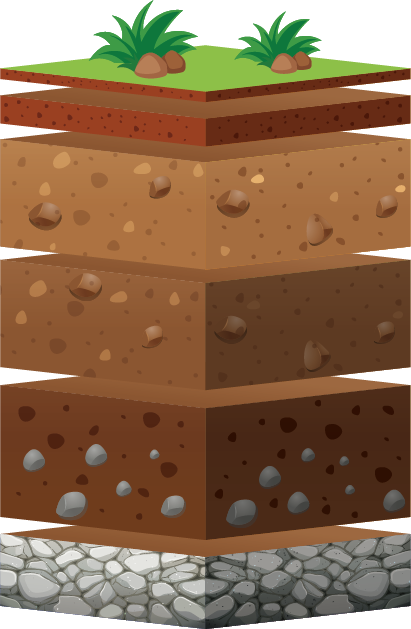
DID YOU KNOW?

Do soils form both from above and from below?
Yes, soils form both from above and from below. Soil formation occurs from above by decomposition and rotting of plant remains and from below by the weathering of the source rock.
Which specialists can grow directly on rock?
Lichens are special creatures because they are a hybrid of fungi (not plants!) and algae (smallest form of plants) or of fungi and cyanobacteria (not plants!). Cyanobacteria and algae can carry out photosynthesis and thus obtain their energy from sunlight. The lichens only need minerals from dust blowing by and nutrients that the rain brings to meet their vital needs. Therefore, they can live on all sorts of surfaces, such as rocks, walls, wood, etc. They need special sites like these because they grow very slowly and would otherwise be overgrown by other plants. Some moss species also grow on stones. They absorb their nutrients, just like the lichens, from the air.
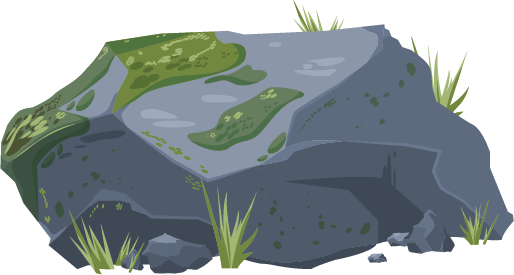
TIP

The apple as “earth”
With this simple demonstration, give the pupils an idea of how large the proportion of (fertile) soil is in the total volume of the earth.
Cut an apple in half. Show your pupils the apple and make a comparison between the apple and the earth: “Imagine that this apple is the earth. The core corresponds to the glowing, solid iron core. The iron core is surrounded by a layer of molten iron. The rest of the flesh is the earth’s mantle, which is made of hot, pliable rock. The apple skin is the earth’s crust of solid rock. And what about the fertile earth now? We can’t even see the 30 cm thick layer of fertile earth on the apple. You can imagine that this layer of earth is as thin as a breath of air on the apple skin.”
Mind Map
Together with the pupils, create a mind map on the topic of soil using the following questions. What do the pupils understand by “soil”? What images/themes do they have in mind about “soil”?

DID YOU KNOW?

Why do soils have different colours?
Different organic substances give the soil black, brown-black and grey shades. Oxidised iron compounds give the soil “rusty” colours, such as brown, red, orange. Oxidised manganese compounds colour the soil black-brown and brown-black. Reduced iron compounds cause greenish, yellowish, bluish and grey to black colours. Reduced soils are caused by oxygen-poor water or an overabundant supply of nutrients, sometimes you even notice the smell of sulphur.
OPPORTUNITIES TO DEEPEN THE TOPIC ACROSS DISCIPLINES

As an interdisciplinary consolidation you can work on the following questions with the pupils:
What role does soil play in our lives?
- Pupils analyse the importance of soil and relate it to their own living environment.
Would life be possible without soil?
- Exploration of the school environment with the following questions: Which places in the schoolyard/on the school building or in the surrounding area show weathering? Are there lichens or mosses in the weathered areas?
- No dirt! Discuss the topic of soil with the pupils in language lessons. The material is currently available in English, German, Spanish and the Basque language.
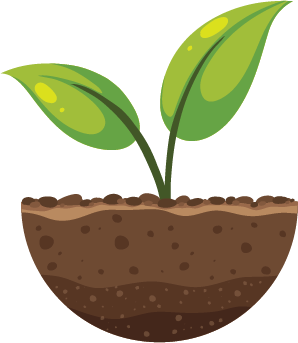
Experiments
Experiment: How soil is formed
Nature knows no waste. With this experiment, the pupils learn about organic waste as valuable raw materials and basic principles of the circular economy.
